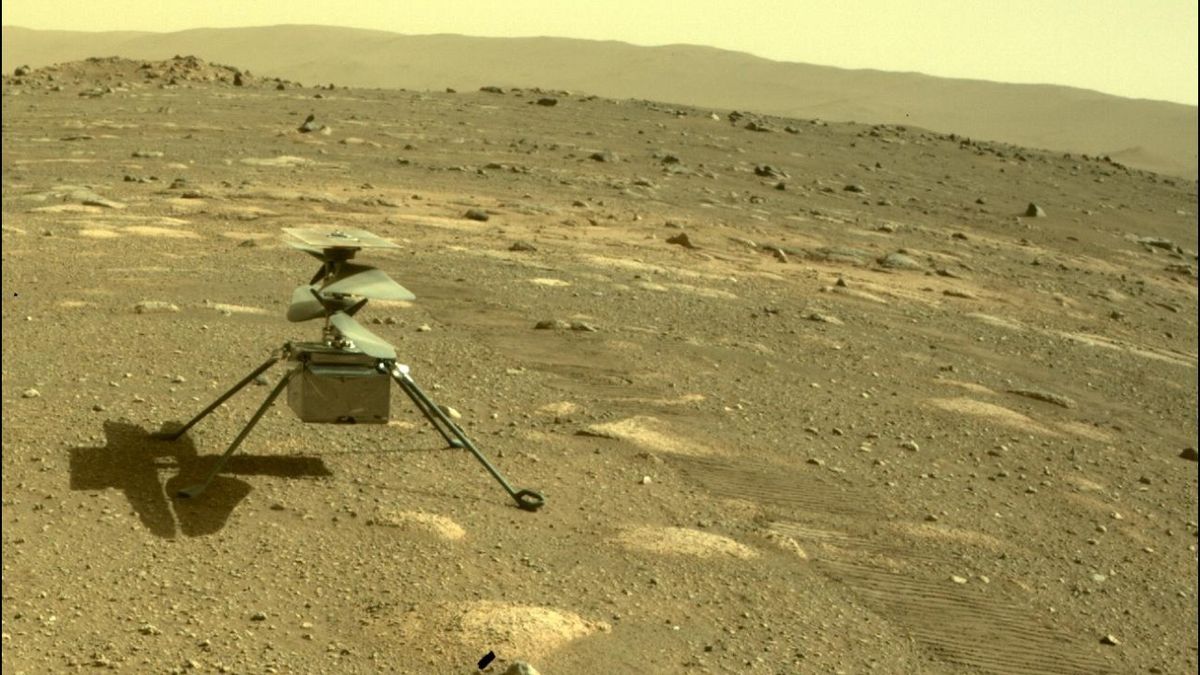Applications are open for NASA’s next year-long mock Mars mission, which simulates the challenges crews may face during future expeditions on the Red Planet. The ground-based mission, called CHAPEA (Crew Health and Performance Exploration Analog), consists of four volunteer crewmembers living and working inside an isolated 1,700-square-foot (158 square meters), 3D-printed habitat. Located at NASA’s Johnson Space Center in Houston, the Mars Dune Alpha habitat includes an adjoining 1,200-square-foot (111 square meters) enclosure used for simulated spacewalks. “As NASA works to establish a long-term presence for scientific discovery and exploration…
Read MoreTag: Mars
India plans to include a helicopter on its next Mars mission
India’s next Mars mission could include a helicopter that follows in the footsteps of NASA’s pioneering Ingenuity drone. The Indian Space Research Organisation (ISRO) is currently working on the concept, which would fly along with an Indian Mars lander sometime around the start of the 2030s. India’s first mission to the Red Planet — the Mars Orbiter Mission (MOM), also nicknamed “Mangalyaan” — launched in November 2013 and entered orbit around Mars in September 2014. The spacecraft conducted science in orbit around the Red Planet for eight years before contact…
Read MoreAstronauts may accidentally threaten Mars missions with their gut bacteria, scientists warn
As space agencies plan for future crewed missions to Mars, with NASA hoping to have humans step foot on the Red Planet as soon as the 2030s, scientists warn that astronauts themselves could be carrying a threat to these missions. This threat may very well live within their bodies. New research using simulated Mars conditions — such as the planet’s lack of water, harsh ultraviolet radiation and exposure to toxic salts — suggests four strains of bacteria that can be carried in the human gut may not only survive in…
Read MoreWater ice buried at Mars’ equator is over 2 miles thick
A European Space Agency (ESA) probe has found enough water to cover Mars in an ocean between 4.9 and 8.9 feet (1.5 and 2.7 meters) deep, buried in the form of dusty ice beneath the planet’s equator. The finding was made by ESA’s Mars Express mission, a veteran spacecraft that has been engaged in science operations around Mars for 20 years now. While it’s not the first time that evidence for ice has been found near the Red Planet’s equator, this new discovery is by far the largest amount of…
Read MoreMassive Mars dust storm spotted by China’s Tianwen-1 probe (photos)
China’s Tianwen-1 orbiter spotted a massive dust storm on Mars near Olympus Mons, the biggest mountain in the solar system. The massive dust storm was captured by the medium-resolution MoRIC camera on Tianwen-1 in January 2022. The mission launched in July 2020 and arrived in orbit around Mars just ahead of the arrival of NASA’s Perseverance rover in February 2021. An image of the storm was processed by Andrea Luck, using data from China’s Lunar and Planetary Data Release System. Luck then shared the images on X. A larger version…
Read MoreNASA’s Curiosity Rover Captures a Martian Day, From Dawn to Dusk
4 min read Preparations for Next Moonwalk Simulations Underway (and Underwater) While stationary for two weeks during Mars solar conjunction in November 2023, NASA’s Curiosity rover used its front and rear black-and-white Hazcams to capture 12 hours of a Martian day. The rover’s shadow is visible on the surface in these images taken by the front Hazcam. Videos from the rover show its shadow moving across the Martian surface during a 12-hour sequence while Curiosity remained parked. When NASA’s Curiosity Mars rover isn’t on the move, it works pretty well…
Read MoreMars’ atmosphere swelled like a balloon when solar wind stopped blowing. Scientists are thrilled
Mars’ atmosphere, once as thick as if not thicker than Earth’s today, is leaking into space. About 0.25 lbs of Mars’ atmosphere (0.11 kg) is pushed away every second by the incessant solar wind, the speedy stream of charged particles routinely blasted from the sun which pervade the solar system and even reach beyond Pluto. But for a rare two days last December, some of that wind went away. Its sudden and dramatic disappearance, causing the atmosphere on Mars’ sun-facing side to swell by nearly four times its usual size…
Read MoreNASA’s Perseverance Rover Deciphers Ancient History of Martian Lake
This 360-degree mosaic from the “Airey Hill” location inside Jezero Crater was generated using 993 individual images taken by the Perseverance Mars rover’s Mastcam-Z from Nov. 3-6. The rover remained parked at Airey Hill for several weeks during solar conjunction. NASA/JPL-Caltech/ASU/MSSS Now at 1,000 days on Mars, the mission has traversed an ancient river and lake system, collecting valuable samples along the way. Marking its 1,000th Martian day on the Red Planet, NASA’s Perseverance rover recently completed its exploration of the ancient river delta that holds evidence of a lake…
Read MoreJapan may delay its Mars moon sampling mission MMX due to rocket problems
Japan’s ambitious mission to explore the two mini moons of Mars could be facing a lengthy delay. The Japan Aerospace Exploration Agency’s (JAXA) Martian Moons eXploration (MMX) is scheduled to launch in September 2024, taking advantage of a once-every-26-months launch window to the Red Planet. Arriving in Mars orbit in August 2025, coinciding with the World Expo in Osaka, MMX would attempt landings on Phobos to collect a minimum 0.35 oz (10 grams) of samples. It would then make flybys of the smaller moon Deimos before a module containing the…
Read MoreHere’s what astronauts in orbit around Mars would see from their spacecraft
Have you ever wondered what it might be like to view Mars from the vantage point of a spacecraft in orbit above the Red Planet? New images from NASA’s Mars Odyssey Orbiter capture what Mars would look like when viewed from above. Mission scientists recently rotated Odyssey toward the Martian horizon for one complete orbit to capture the new imagery of the Red Planet, revealing deep craters and diverse cloud structures as astronauts orbiting Mars would expect to see them. “If you were an astronaut, the first thing that would…
Read More

